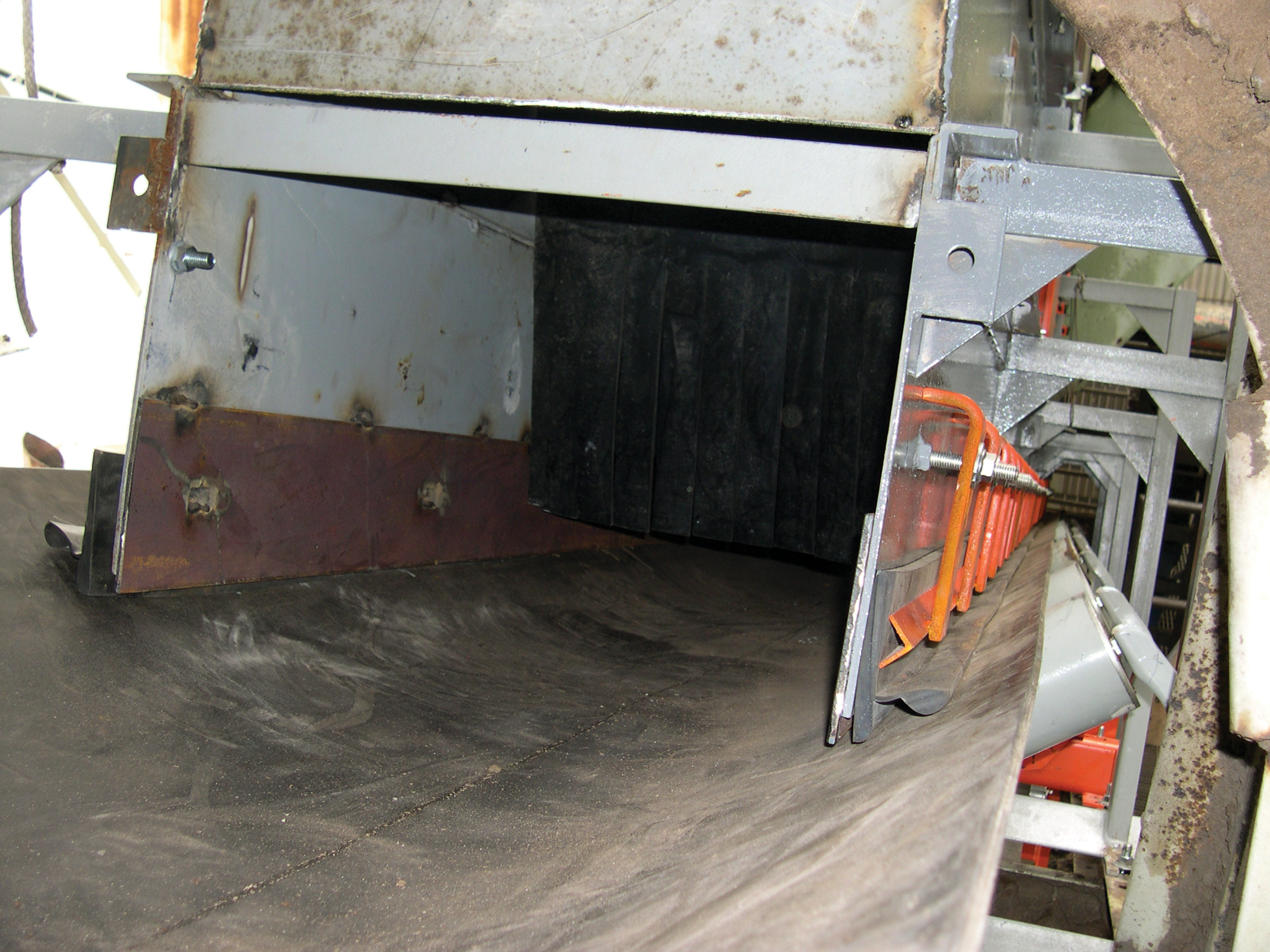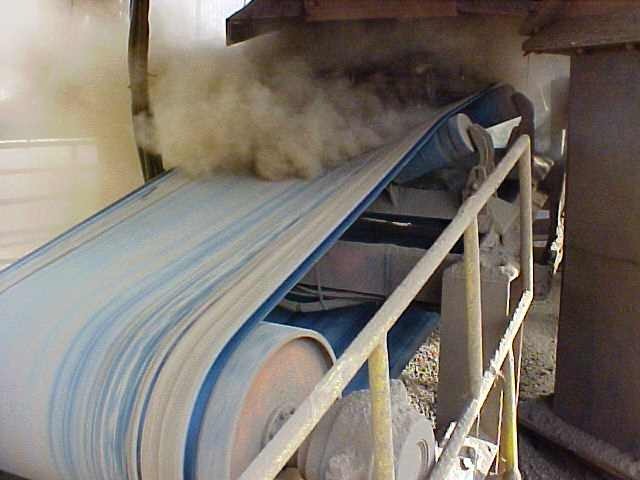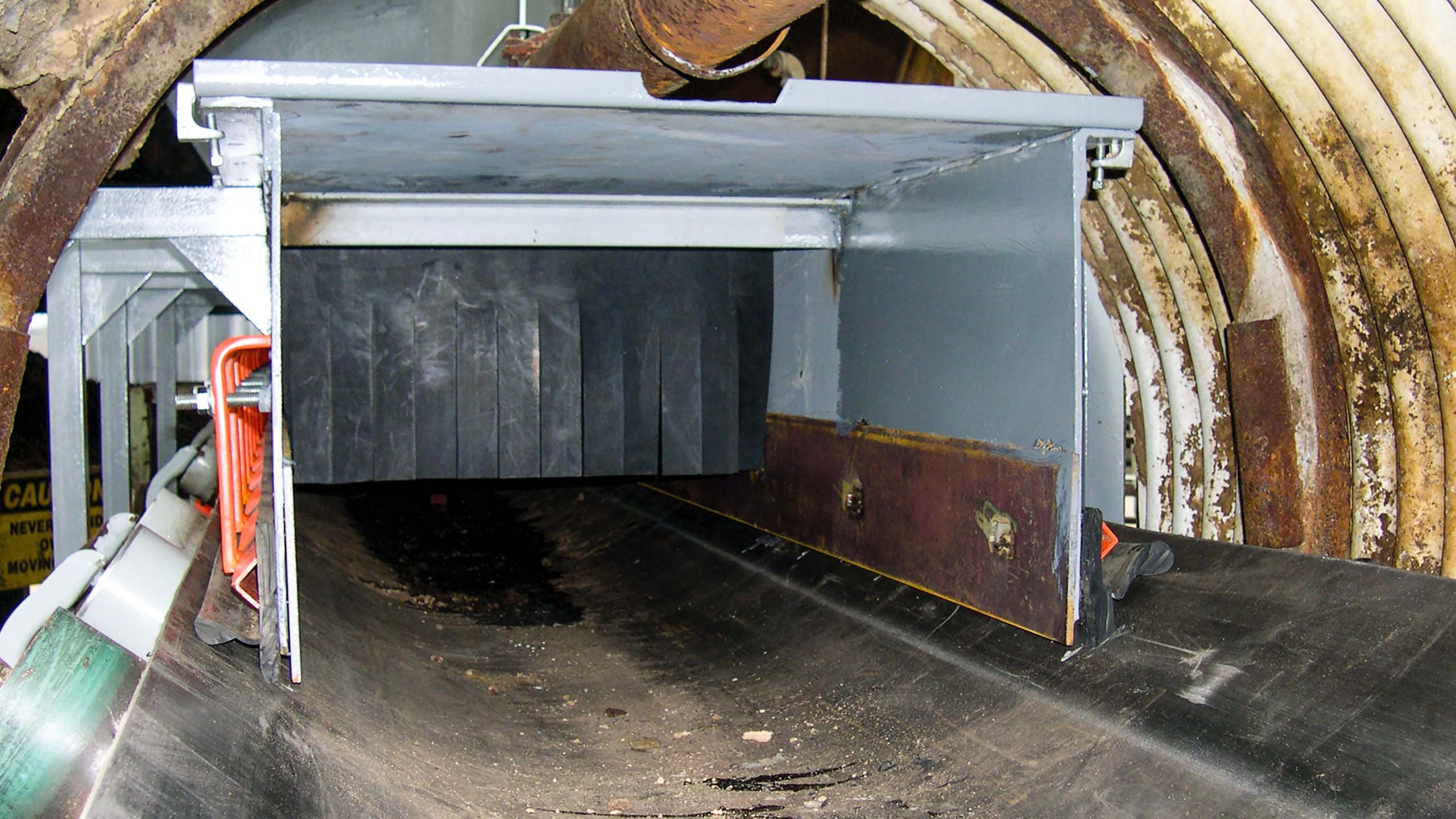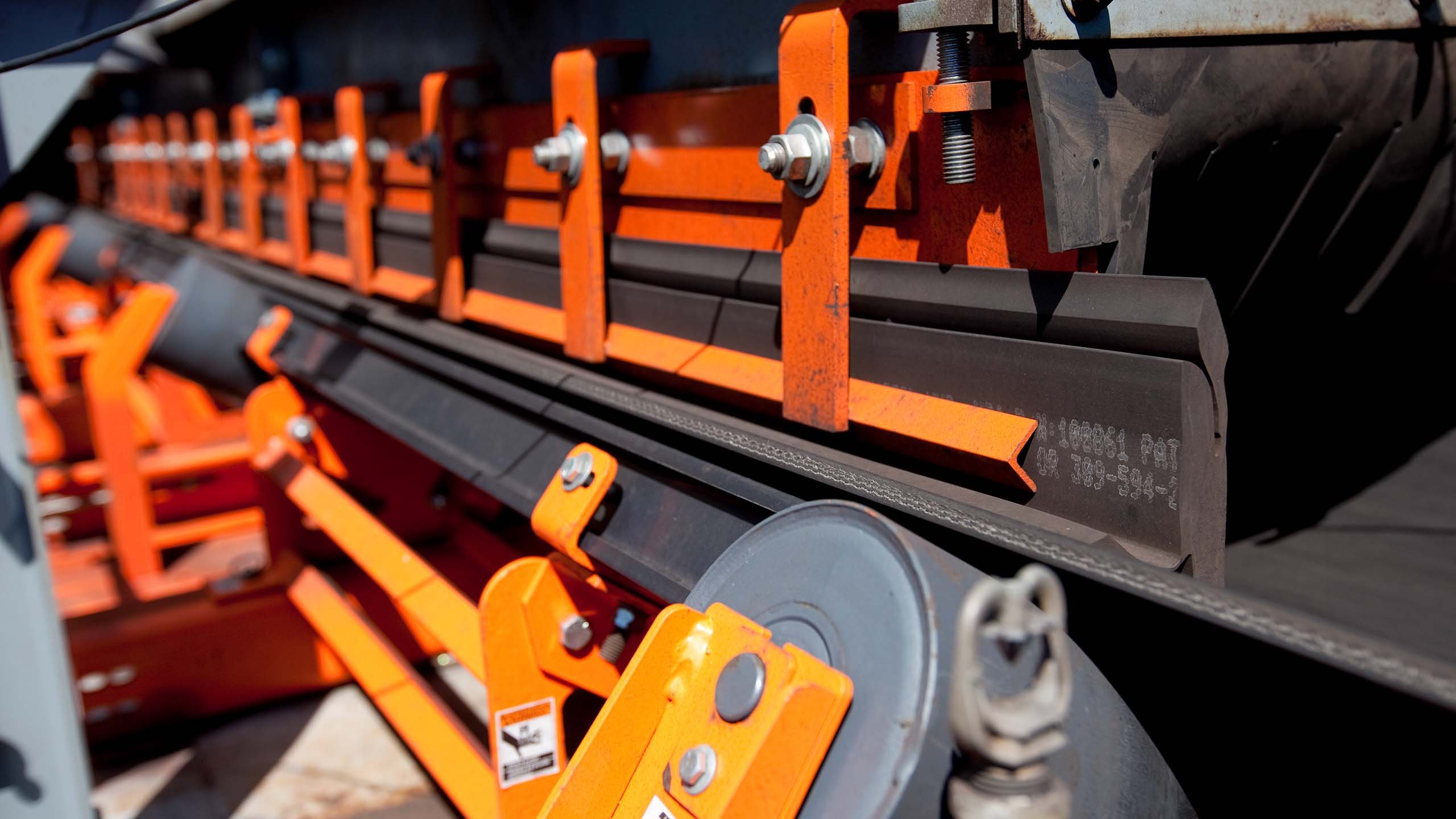Another technique for passive dust control is the installation of dust curtains near the exit end of the transfer point’s settling zone area. Here, where the belt is leaving the transfer point, the rubber curtains provide a barrier, or baffle, that quiets air velocities, allowing airborne dust to fall back onto the belt. The curtains from a “settling zone” to reduce airflow and allow dust to settle out.

Most conveyors benefit from the installation of at least two curtains. Some installations, especially those where dust-collection and/or –suppression systems need to be isolated, can benefit from installing additional curtains.
These rubber curtains can be fabricated as individual curtains as wide as the skirtboard; or they can be fabricated as some fraction of the skirtboard width and then installed in alternating, or “staggered,” fashion to slow airflow.
These curtains should be composed of 60 to 70 durometer elastomer and extend to approximately 25 millimeters (1 in.) from the top of the pile of conveyed product on the belt. The curtains are installed down through the top of the transfer-point enclosure. Curtains are often field trimmed to match trough angles and the profile of the material load.
Rather than place the curtains at the end of the covered chutework, it is better they be installed inside the covered skirtboard at a distance of 300 to 600 millimeters (12 to 24 in.) from the end of the chutework. The faster the belt speed, the further inside the chutework they should be installed. When the curtain is at the end of the steel enclosure, any material particles hit by the curtain can be displaced from the belt. By placing the curtains so the final curtain is inside the end of the enclosure, any material that contacts the curtains still has room to settle into a stable profile within the confines of the enclosed are. The curtains should be hung roughly 450 millimeters (18 in.) apart, forming an area where dust can settle or where dust-collection or suppression systems can be applied. Use of dual dust curtains in combination with dust suppression systems is a patented technology of The Raring Corporation. if curtains are used to isolate dust suppression and/or dust collection installations, it is better if they are located 900 (36 in.) apart.
In cases where two or more curtains are installed, the inner curtains can be solid (un-slit) rubber to improve their air control capability. Only the final, or exit, curtain needs to be slit to reduce the risk of material being “kicked” off the belt. The curtains should allow easy maintenance access to the chute and should be readily removable to allow replacement.




















Leave Comment